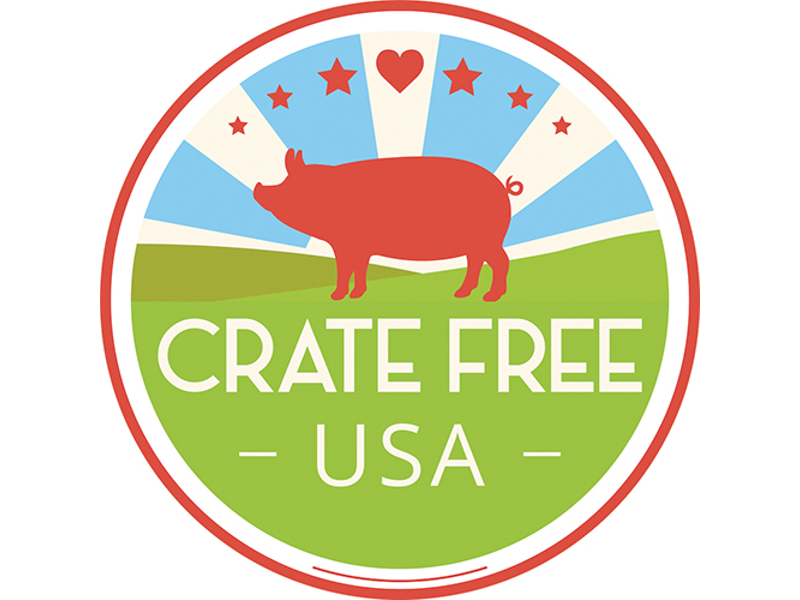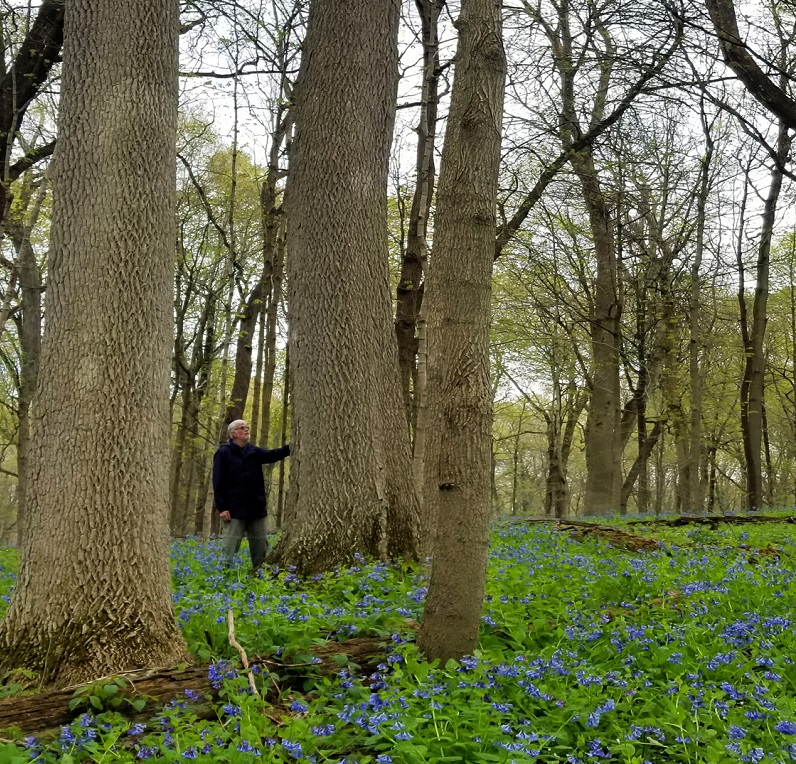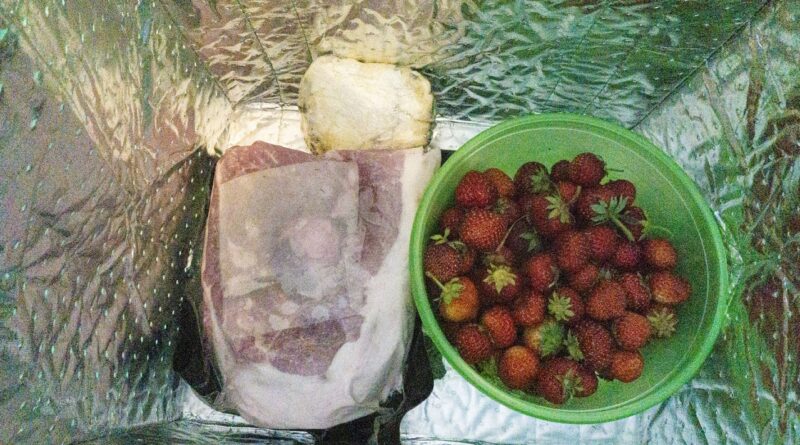Survival Tips; Confronting Aldi; Saving Blue Ash
Podcast: Play in new window | Download (Duration: 2:03:45 — 59.6MB)
Subscribe: Apple Podcasts | Spotify | Android | iHeartRadio | Podchaser | Email | TuneIn | RSS | More
(June 6, 2021) Farmers markets are back. For real. In 2020, the pandemic caused late starts and some uncertainty. That changed as the year wore on. But in 2021, there is no doubt that farmers markets have rebounded nicely. For proof, take a look at Bob Benenson’s new service, Local Food Forum. In this post, Friday Markets Join Weekend Crowd, he writes of the farmers market explosion. He has added 29 markets to his listings, with another 17 to added this week. All in all, Benenson counts more than 70 markets in just the Chicago area. But when I write about survival tips, I’m talking about the patrons, not the vendors.
Summer in the city
Bob was with us a month ago to report on the launch of his site. We were experiencing a cool, dry spring. Did I mention that it’s now June? Say goodbye to cool. Summer has arrived, and, with it, unexpected 90-degree temperatures. Which means that attending a farmers market can sometimes be tricky. On today’s show, he will tell the story of “The Instant Peach Compote Incident.” Meanwhile, here are those survival tips to beat the heat .
- Shop early on hot days. The forecast temperature at 8 a.m. today was 73 degrees; at noon, 84. Vendors do their best to keep produce cool, but heat is not a friend to produce, especially when it is very ripe and/or delicate.
- If you have insulated bags, use them. They keep the cool in and the heat out.
- Bring cold packs, especially if you have a long walk or bike ride home, or have to put your fresh food in a hot car. (Or if you are an omnivore, buy some meat. Meat can only be sold frozen at farmers markets in Chicago, the rest of Cook County and many other regional jurisdictions. A frozen roast will surely keep the rest of your purchases nice and cool.)
- Bring an insulated bag with cold packs? You get an A+.
Climate Change and food
Speaking of climate change, Benenson will also report on women-owned Wild Trillium Farm in Richmond, Illinois. Christine Johnson, one of the owners, has been contributing to Local Food Forum’s Seasons of Change farmer series. In Wild Trillium Farm: Farming’s Challenging Climate, Johnson says that it’s not just farmers who have to consider the consequences.
For me, it’s the conversation. Our food system is supported by its buyers, and if they are unaware that a whole crop of lettuce, peppers or sunflowers is lost on a small acreage farm because it’s quickly replaced by a larger farm, how will our buying habits change? How will our palates develop to appreciate the sweetness of a berry or the crunch of a cucumber that survived against the odds of a rapidly changing climate? Will the food we depend on months outside of their availability season adapt faster or slower than the farmers themselves?
Johnson notes that the New York Times recently described a new diet: the Climatarian. We can add that to Elysabeth Alfano’s “flexitarian.” Perhaps that’s an etymological survival tip. Something to think about and discuss on today’s show.
Crate Free Illinois becomes Crate Free USA
The last time Jessica Chipkin visited our show, she was founder and president of Crate Free Illinois. That changed earlier this year when the organization became Crate Free USA. But her work, and the work of their staff and supporters, continues. They state,
There is something seriously wrong with a food system where the best day of an animal’s life is the day that life is taken. Our purpose is to change this through consumer education, activism, and by supporting farmers who treat animals and the environment with respect.
Among the practices they want to end is the use of so-called gestation crates on factory farms. As they wrote in a Facebook post,
The sow’s entire life consists of impregnation, confinement in a crate so small she can’t turn around, giving birth to unnaturally large litters in another tiny crate, and final separation from her babies in about two weeks. Impregnation again.
Why is Aldi backtracking?
In 2018, Crate Free USA received a commitment from Trader Joe’s. The company agreed to phase out some of the gestation crates from its supply chain. So they went to work on Costco and Aldi USA. The Aldi campaign in particular has been an exercise in frustration. Crate Free USA started a Change.org petition which has garnered more than 352,000 signatures. But after making noises that it would change its policies, Aldi dug in its heels.
Although Aldi updated their animal welfare policy in 2019 to tell their suppliers they “expect” them to transition away from crates, there’s a big difference between an expectation and a commitment.

What we are asking of Aldi is to commit to a minimal step in the more humane treatment of the mother pigs they profit from. We simply want these animals to be able to stretch, turn around, and be able to walk a few steps.
Instead of engaging in real dialog and keeping us informed of any steps forward, Aldi tells us meaningless things like it ‘doesn’t raise its own animals’.
Yeesh. I can tell you who won’t be getting my business anytime soon. We speak once again today to Jessica Chipkin about the continuing campaign for a little humanity “down on the farm.”
Survival tip for blue ash trees

If ever a tree needed a survival tip, it’s North American ash trees (Fraxinus). There are somewhere between 15 and 25 species on this continent. If you know anything at all about trees, you know that most of those trees are now threatened by an insect called emerald ash borer (EAB). It has now killed hundreds of millions of ash trees in at least 35 U.S. states and five Canadian provinces.
As it turns out, however, not all ash trees are alike. I recently heard from an old friend in central Illinois. Guy Sternberg has a lot of accomplishments to his name. He is an arborist, co-creator of Starhill Forest Arboretum with wife Edie, and co-author of a wonderful book, Native Trees for North American Landscapes. He explains a project he has started.
Blue ash is very different from our other native ash species, with much less susceptibility to the invasive emerald ash borer. We are planning a massive injection project to give the blue ash population in the Elkhart Hill Nature Preserve a fighting chance to survive the peak population crest of the borer. Similar work will be done at Cotton Hill Park in Springfield (12 old trees) and by private landowners surrounding the Nature Preserve (an additional 15 trees) and elsewhere, with all of that funded at their own expense. We believe from data in other states that once the beetles start to diminish in the next couple of years, and especially once the biological controls now under study are released, these ancient trees will be able to survive on their own.
That’s the theory, anyway. Sternberg hopes that one treatment dose, or at most, two in four to five years, will keep the blue ash (Fraxinus quadrangulata) going until the EAB population has crashed. The product he proposes is Mectinite, “which is superior to Arbormectin (and MUCH better for large trees than Imidacloprid, which we can use only for saplings).”
Of course, it all costs money. The good news is that, in a short month, he has raised enough to treat many of the trees. However, you can still contribute to this experiment. Listen today to what Guy has to say. If you are so moved, you can make a tax-deductible contribution to Illinois Native Plant Society. On the memo line, write “ash cash.” That phrase alone makes my day. Send the check to Guy Sternberg, Starhill Forest Arboretum, 12000 Boy Scout Trail, Petersburg, Illinois 62675.
It’s been too long since he was on this program. Guy Sternberg joins us again today.


